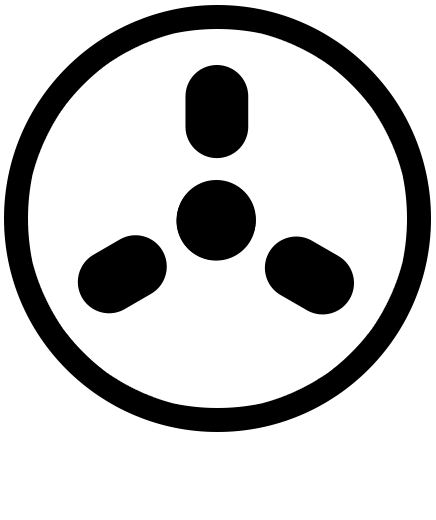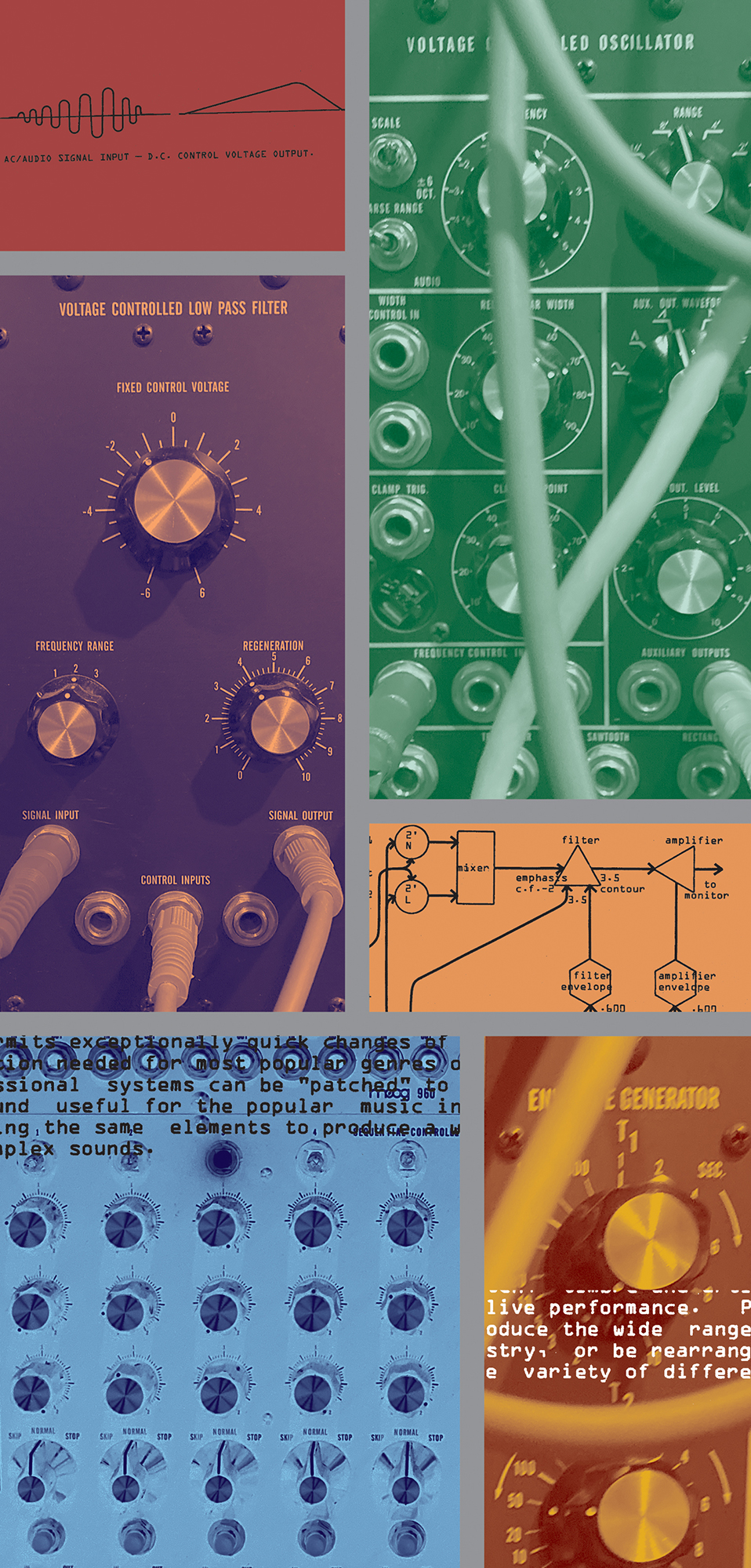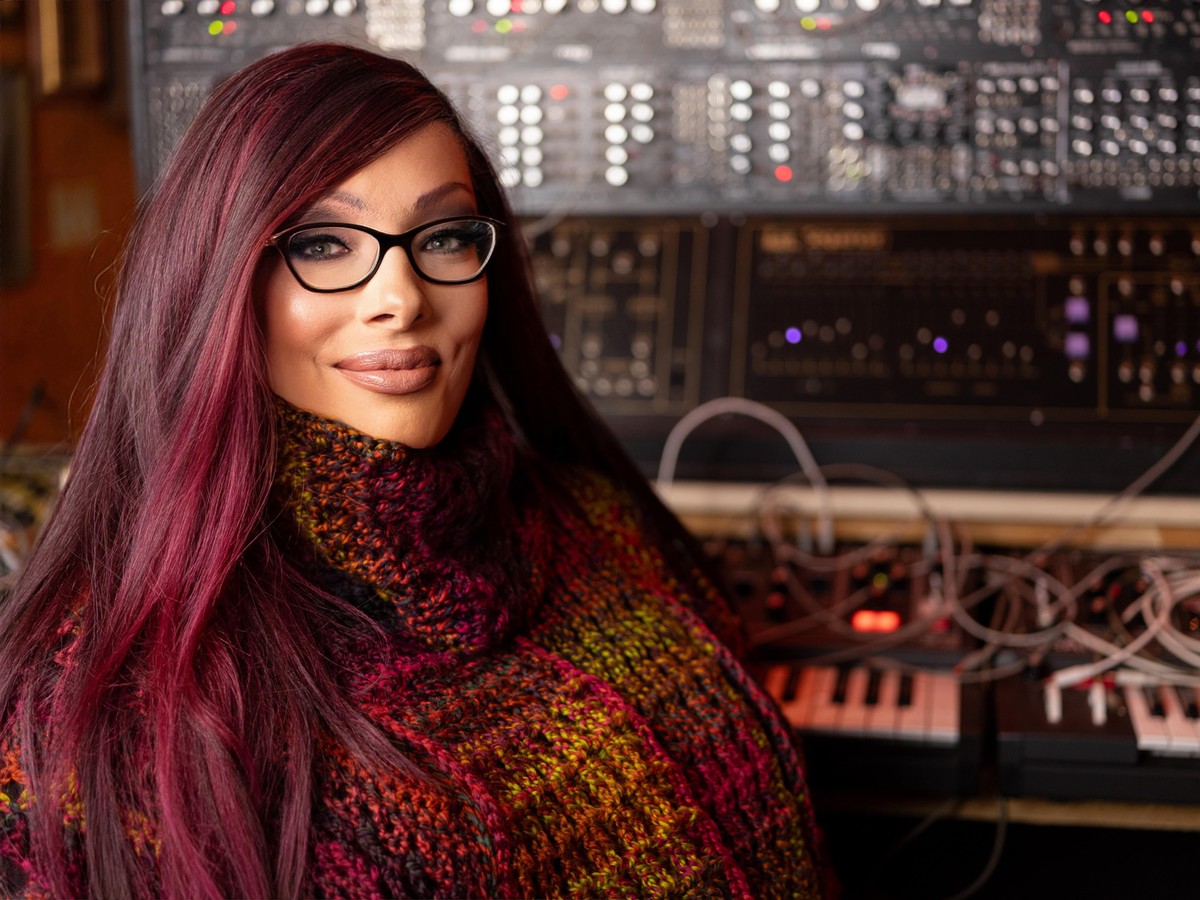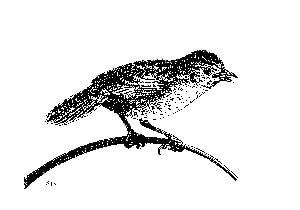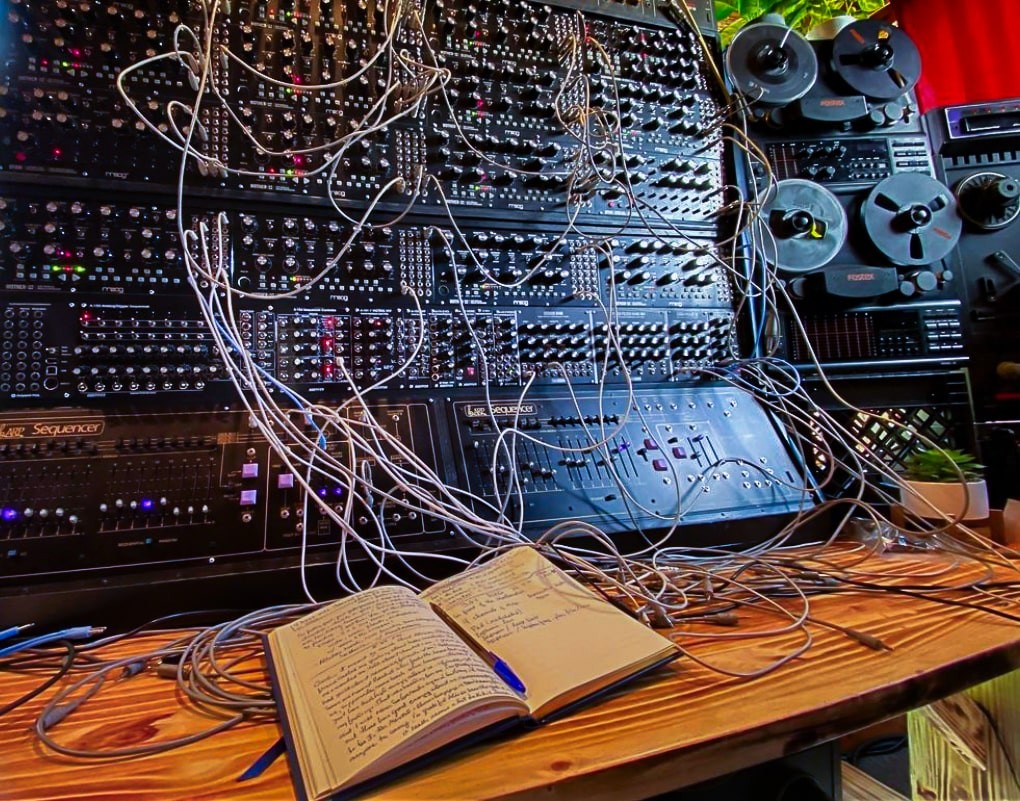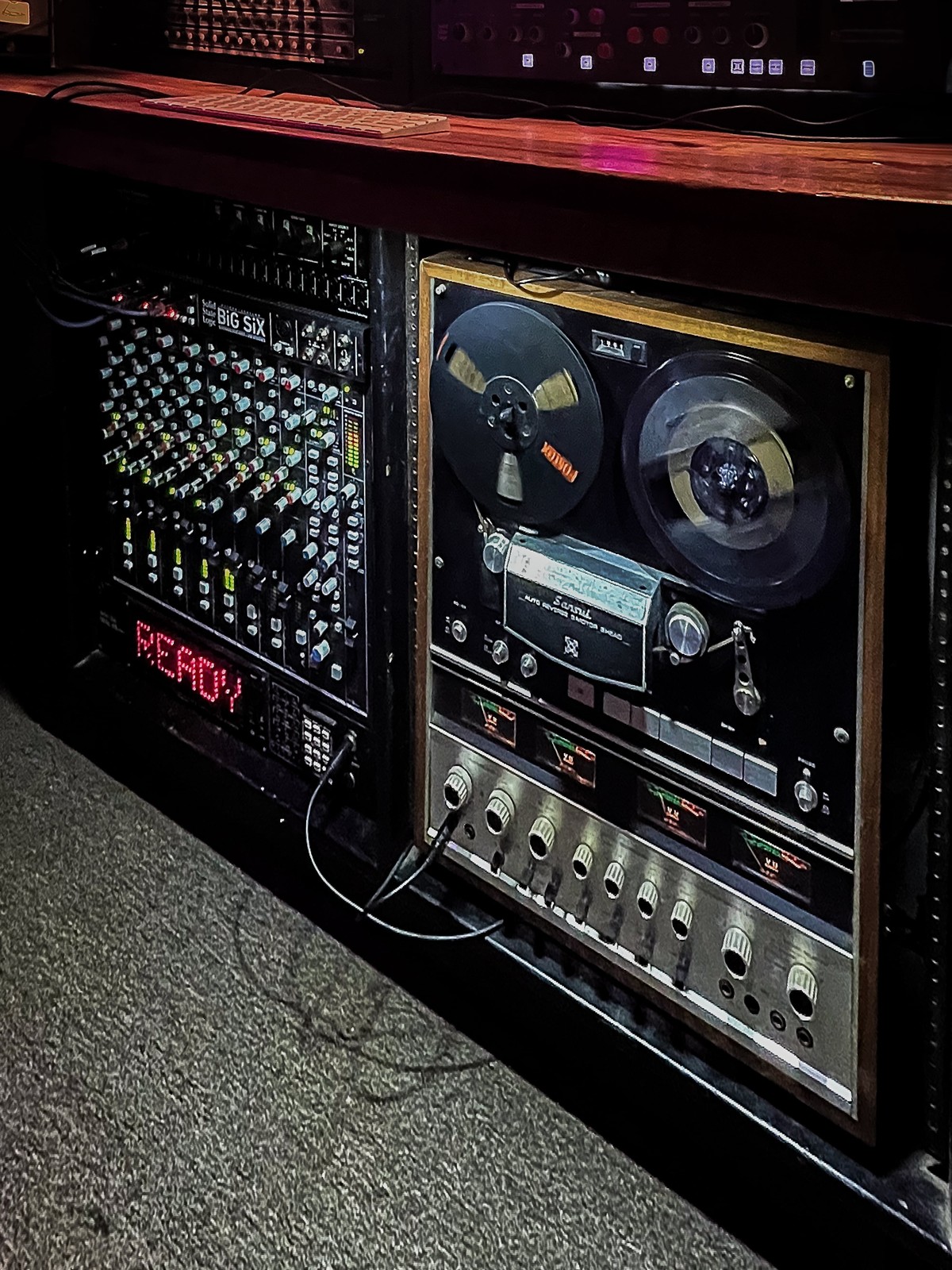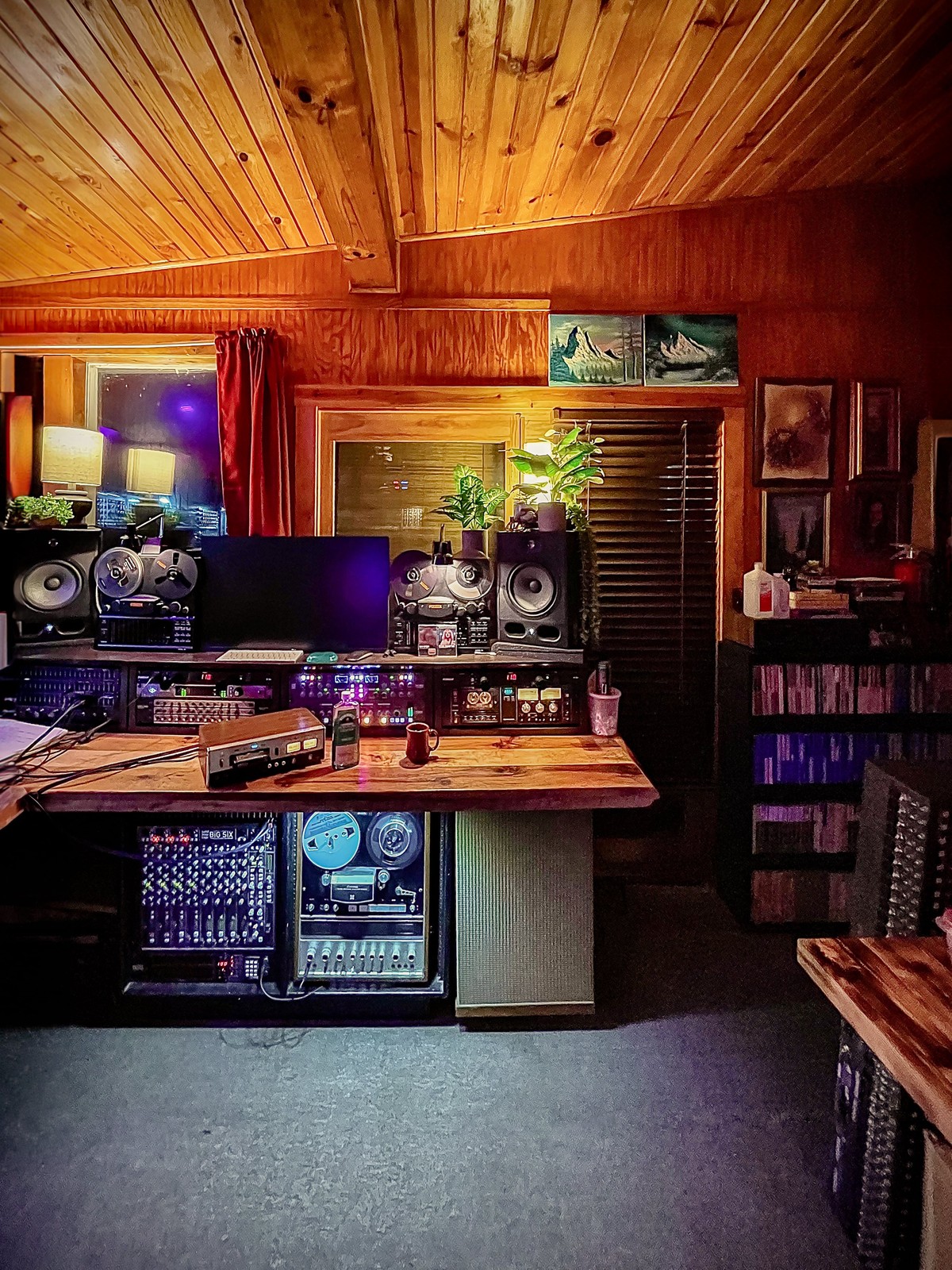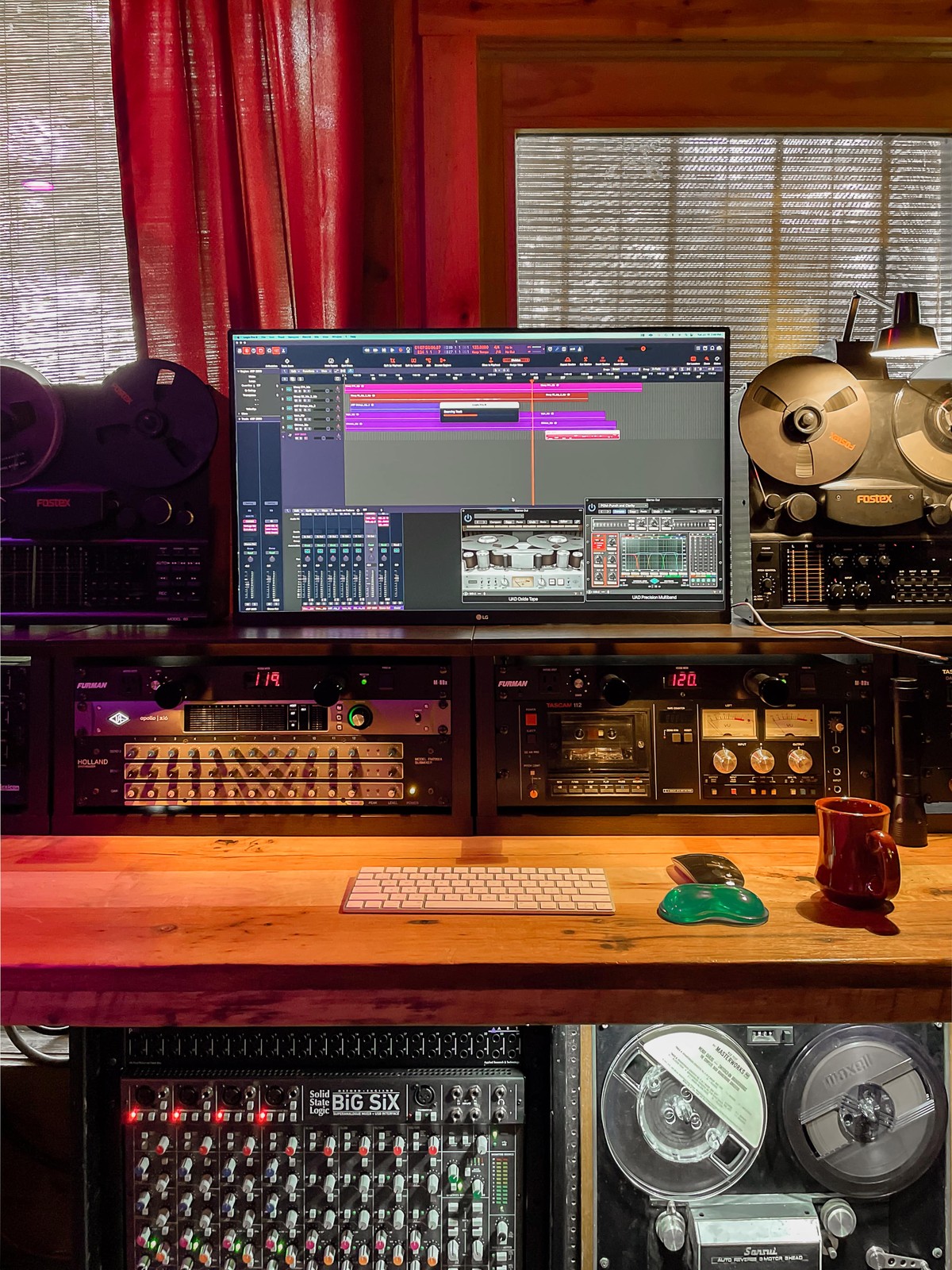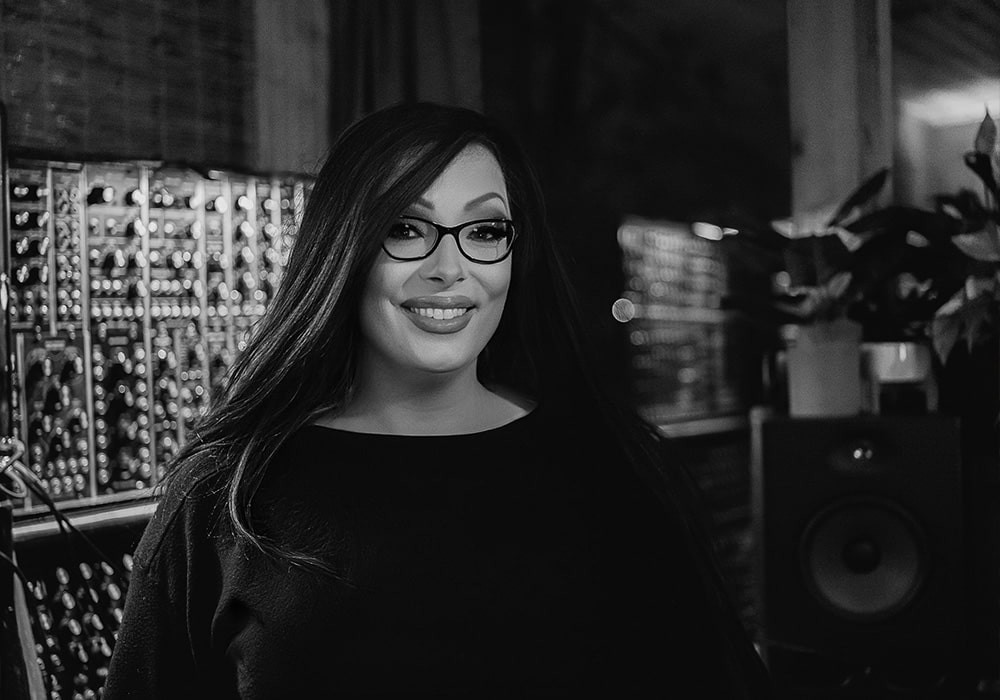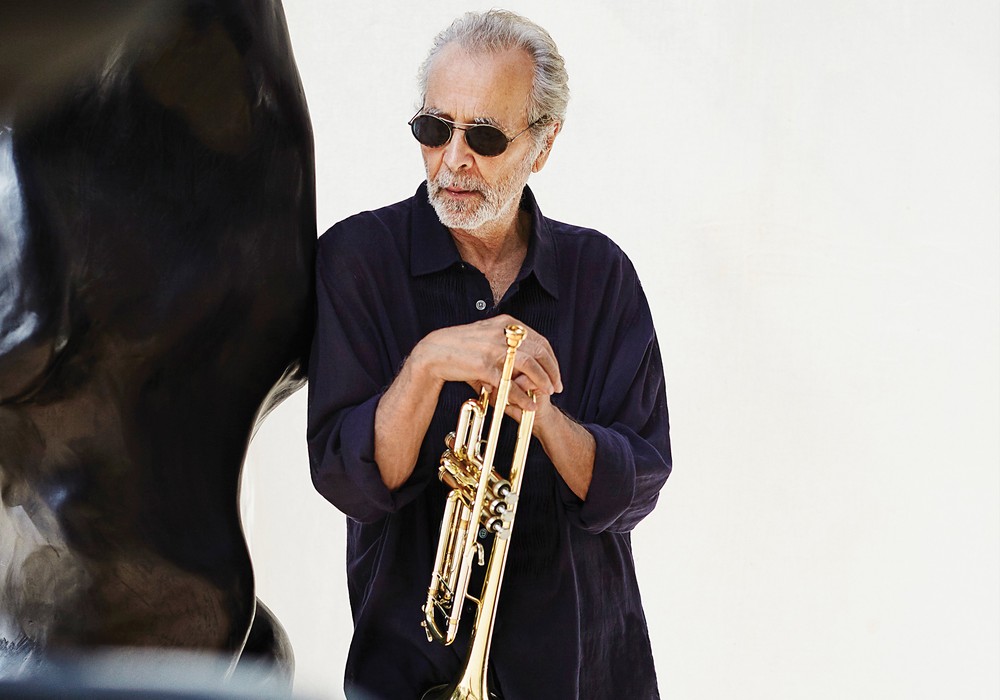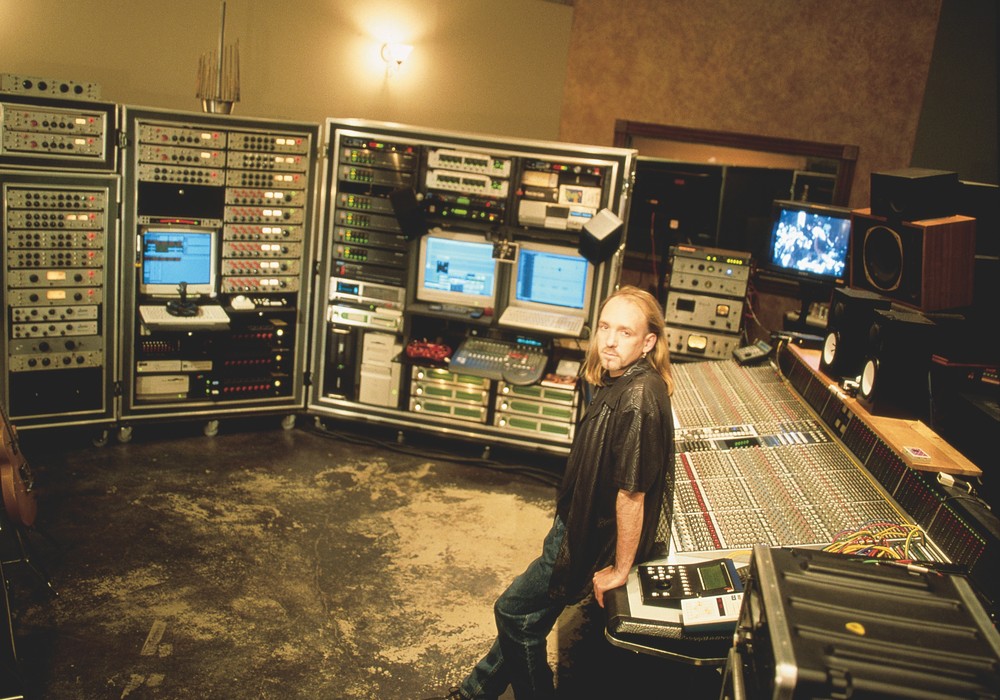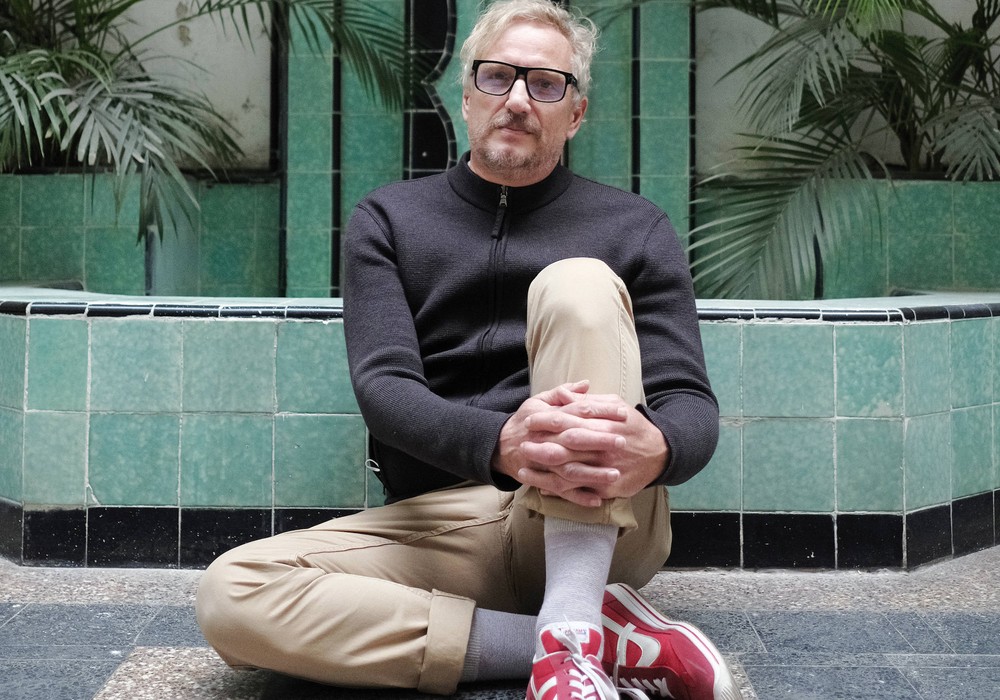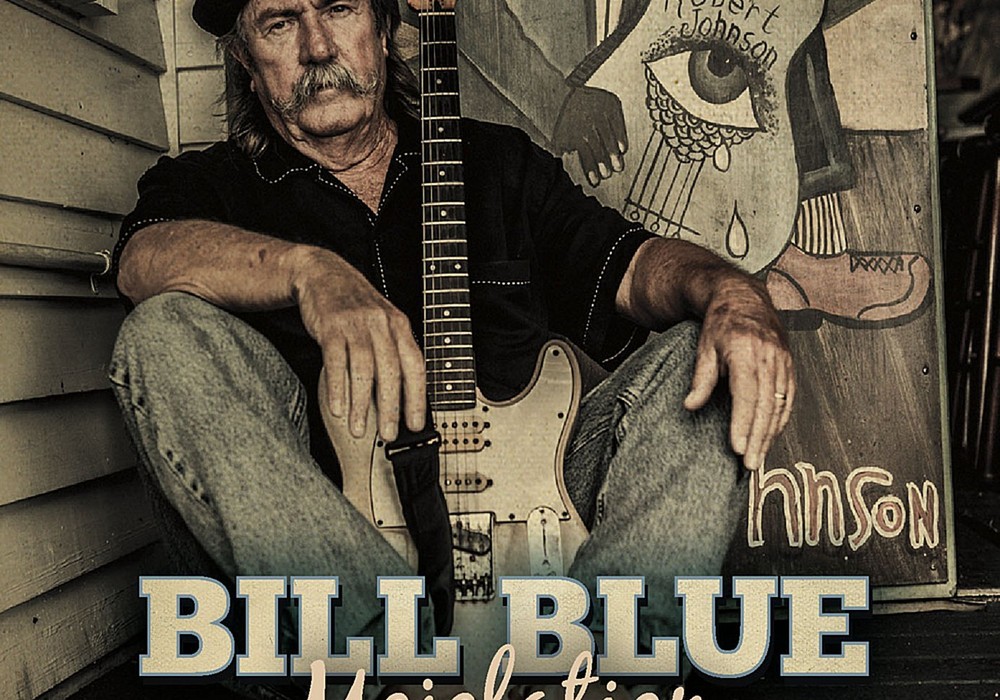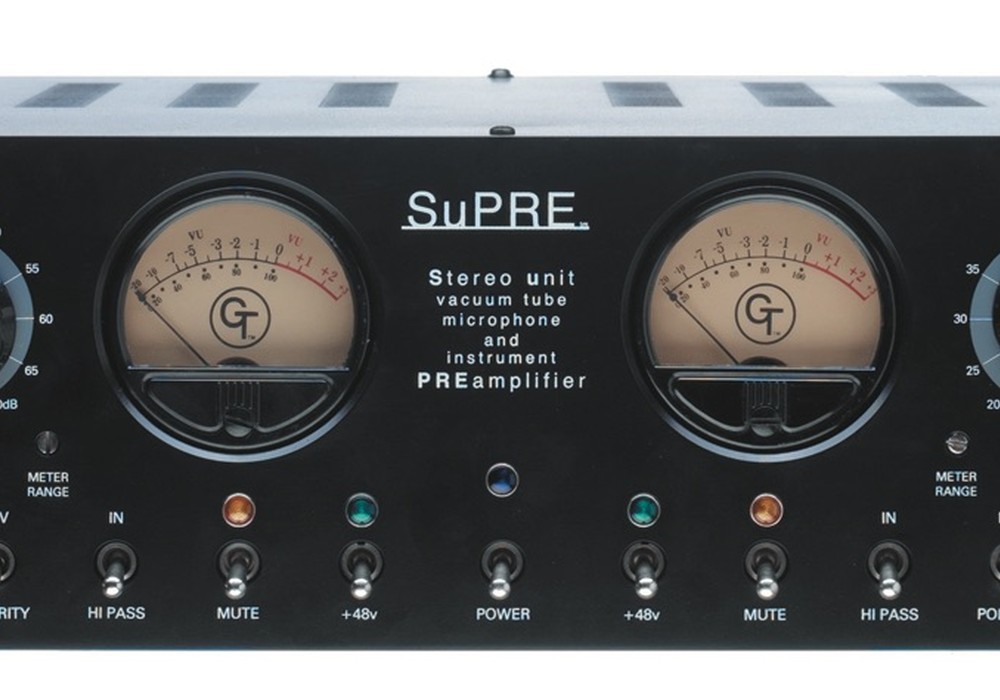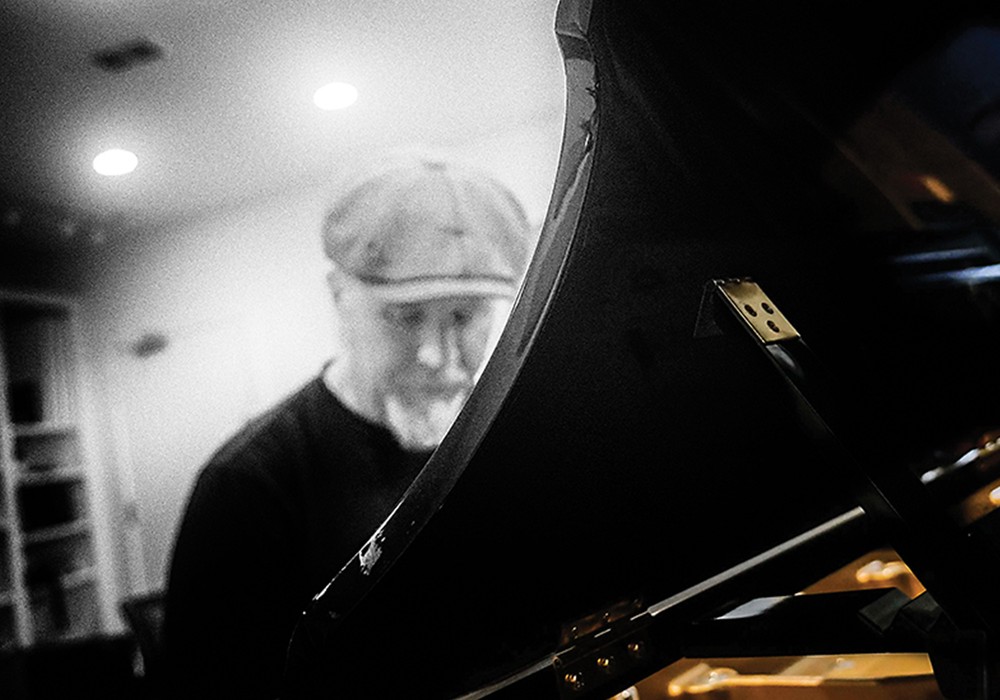You often mention “the source” in your creative process. What does that mean to you?
What's the source? Well, for me, the source is living, working, parenting, and creating in nature.
When I first started doing electronic music 30 years ago, my first studio was in a small shack in rural, West Virginia. I’ve lived in many cities since, but I didn't feel I was in tune with what was going on. Now, it’s full circle. I’ve set up shop in a wonderful location where I feel I am truly part of the source of where my intentions with electronic music unfold and evolve. My most fulfilling days of composing out here simply entail going outside, having open ears, and listening. My albums, American Watercolors and Synesthesia, were developed by exploring and learning the passageways of the woods and landscapes here. I would pack supplies for the day, then, before sunrise, I'd hike to a little camp I’ve set up in our woods and listen intently from dawn to dusk. To listen to the metamorphosis of a day out here unfolds much like a great piece of classical music. There’s so much you can learn about arrangement, musical, and sonic placement by just listening for a full day. That's the source for me, to be out here in this environment. It’s truly precious to my process.Walk me through how you play with spatial audio and transpose your rural setting.
I've always been attracted to sound and fascinated by how sound works. It's pressure, its distance, it’s space. It’s when you stop and really remove yourself from distraction; when you set out to truly release yourself to deep listening. You learn what works in real time. So many more elements unfurl clearly into view beyond just the musical idea you’re intending to harness and create. When I began working with synthesizers years ago, I began by creating in a simple musically stylistic direction. Then I moved more into 20th century atonality by exploring stereo range, width, phase, and contrast. Modular synthesizers offer an incredible celestial range, both musically and sonically. I wanted to explore something beyond that, where I could connect the listener closer to my music. I wanted to create a sonic space, an electronic wilderness around my listeners so that the music would reach them in a different way. As if the music was a response to the stereo landscape. Over time, I developed this process where I would venture out with these big notebooks. I would take them and use them to record everything that I would hear while exploring throughout the many areas of Appalachia. On one half of the notebook, there would be a selection of frequency graphs to record audio data, including duration, amplitude, modulation, position, panning, and distance. On the other side I would have musical staves, a keyboard all along the bottom of the page with its assigned frequency number. Then I’d included another column for notes so that I can connect these different elements with a compositional intention. I’d explore, hike, and sometimes canoe to a location, set up camp, then listen to each specific environment for hours. I’d implement a stopwatch and a compass to help pinpoint information I heard traveling throughout the valleys and channels. Pitch, repetition, modulation time, modulation shape, and so on. I would experiment with quantizing that information to the value of the nearest semitone, then translate those calculations into musical dictation. Those would become arrangements and orchestrations for other instruments, and of course modular synthesizers.
How do you translate your experience in the woods back into the studio?
My studio is small and cozy, but I have custom-built large format 5U modular synthesizer cabinets that go all the way around the entire studio. All the trunk lines and outputs are wired to a patchbay that can be routed to anywhere in the studio – tape machines, HD recorders, and DAW. I have quadraphonic monitoring and mixing in the studio at any time, which allows me to listen for the kinds of detail and realism I’m going after when realizing a piece. Being able to actually see every module from each system allows me the freedom of choice to create each detail of a sonic dimension or musical development. The patchbay allows me to immediately pick and choose which format I want to start recording a piece with. Each format changes the process of my muse. Sometimes, all I want is a 4-track reel-to-reel or 2-track DSD [Direct Stream Digital]. If it sounds great there, then it's either a finished piece or I will transfer and take it into a multitrack for post-production. Some of the tools I have here, such as frequency counters, oscilloscopes, analyzers, and a wide variety of different filter banks and systems, allow me to fine tune and dial in what impressions I collect from the outside world. It’s time consuming, yet a meditative and rewarding process. On albums like Early Atmospheres, I would spend many mornings well into the night, creating different kinds of birds and developing beautiful scenes of quadraphonic and stereo development. Modular synthesis allows me to create and ornament an ever-unfolding sonic environment for a participating listener.
Tell me about your custom modular cabinet and your touring rig that recently made an appearance at Luminous Abstract in Asbury Park, New Jersey. What's inside?
The modular system is a custom construct I created with Peter Foley [foleytronics.com]. It contains my Moog Mothership in a cabinet. I've used this system for the videos I've collaborated on with Moog Music. In the other cabinet – which is usually underneath – are a pair of Doepfer modular cabinets that contain a wide variety of Eurorack format modules – Moog, Doepfer, 4ms, Buchla, AJH, and Roland, as well as some custom modules made for me by Rich Sherkin of Lower West Side Studio in Canada. Rich is an incredibly talented and brilliant synth builder. He has created many custom modules and modifications that are all throughout my studio modular systems and live setups. Rich is a wizard at creating modules for designs like classic ARP 2500, Serge, Steiner-Parker, EML, and Oberheim filters. He built me a custom complex sequential generator and universal logic clock. He also recently modified a pair of Hologram Electronics Microcosms into a pair of 5U modules, each with true stereo interfacing, MIDI, and more CV [control voltage] control. He's been a godsend to the welfare and quality of my work. Both he and his wife, [actress, producer, writer] Mari Sherkin, are both extremely inspiring and talented artists. Next to the modular systems rests a 32-channel mixing console that I use to mix the show, and it can also multitrack with ease if I wish. I have a Mellotron M4000D, Moog Grandmother, and an ARP 2600 on top. The ARP 2600 and Moog Grandmother are essential to my live performances. In front of me, facing the audience, is the Moog One 16 voice polyphonic synthesizer – the best sounding and most versatile of all the modern polyphonic synthesizers. It's like packing a Moog Model 15, [Yamaha] CS-80, and an Oberheim under one hood. Three poly-sequencers at any time, multi-timbral presets, a wonderful mixing section, and a sound that cannot and will not be denied! [laughter] It crushes. It has pummeled a few audiences on a few occasions. I've been touring with the Moog One for five years, and it's been a trooper.
I heard you have an assistant that tours with you to help set up, and you do not patch until you're at the venue?
When out on the road, my dear friend and technical assistant, Brandon Reisig, usually comes with me. He is an amazing synthesist, so we speak the same language. We also get on well, have the same sense of humor, and are individual perfectionists. We do a great job of tackling the snags that come with each and every live performance. We have our system down to a science, which allows all the hard work to be fun and keeps the spirits clear so great music can be projected to each audience. It takes about four to six hours to unload, unpack, set up, patch, tune, run lines, mix, and refine before soundcheck. I prefer not to pre-patch. For me, the creation of the setup each night is my favorite part of touring and performing. I like to go into a situation and feel out what the energy is, and what interests the audience or students have. I try to stay open and sensitive to that barometer. It provides me the freedom to dial things up and create a beautiful constellation for the night. Once set up, I throw on the headphones and patch pretty quickly, and we will have arrived at what the set will be in a couple of hours. After the show, it takes only an hour to 90 minutes to tear down, pack up, load everything into the van, and head to the next concert, residency, or a dark, cozy, local bar somewhere for an ice-cold beer. Brandon is family. We have great systems in place for each other's projects. When time permits, Brandon will join me on stage for an interactive modular synthesizer piece. It's always a great contrast, and great fun.
I'm not sure this is accurate, but I heard you stole an ARP from an old job in commercial work.
That is partially true. I mean, I would never steal anything per se! [laughs] The studio I worked at in the late '80s had an ARP Odyssey with about two inches of dust on it. I cleaned it up, took it apart, and changed a few things, and that’s the ARP Odyssey that I still use today. I just had it refurbished and I spent about what they cost on the market to give it a clean bill of health. I made a decision at a certain point, after moving out here, to sell off a lot of my vintage gear except for all of my ARP synthesizers. I have two ARP String Ensembles and an ARP Omni, as well as an ARP Odyssey, ARP Axxe, and two ARP Sequencers. I still have my 1978 Moog Prodigy. I finally sold the [Moog] Polymoog. All my vintage [Sequential Circuits] Prophets, Roland, and Yamaha synths I had to streamline, because it's incredibly expensive to keep vintage synthesizers in record ready condition. I wanted to build an expansive modular system that aligns with my musical intentions, needs, and my process. This is why I went large format in the studio. It's large enough to do multiple projects at once and explore many ideas simultaneously and efficiently. Most importantly, it’s audiophile quality. It has to peel the paint off the walls and shake the entire house when it’s supposed to!
Early Atmospheres is a standout in your catalog, particularly the track “Dawn on Manitou River” really captures these vintage machines and creative process for me.
That was the most fun I’ve had composing a record! It came after a long, brutal, writer’s block. I had been in a pretty dark space for a long time. The beginning of last year took a toll on me and it made writing difficult. My career is to be creative, and I couldn’t really get to a place of inspiration beyond just being a sound designer and educator. However, composing and recording is the core of it all for me. It’s what gives life and clarity to everything else that I am doing. I finally took five days offline and went to write and record that record. I spent the first couple of days reading and hiking to open the receptors.
What were you reading? Are these instruction manuals or novels?
I went back and read Tom Brown Jr.’s The Journey, which is an amazing philosophy book. I did read some technical books about filters and filter design from the '70s and early '80s, as well as Stephen Nachmanovitch’s Free Play, Wyrdcraft by Matthew Ash McKernan, Trapline Chatter [Life and Love with ‘Last Alaskan’ Bob Harte] by Nancy Becker, Nik Bartsch’s Listening, and others by E.E. Cummings and Piers Anthony.
How did you get yourself out of creative burnout?
Patience. You have to stop and remember that many of the great things that we do in life are not because of our strides, but it’s because we enabled the capacity for those blessings to come through our facilities as artists. It’s a balancing act for sure. When I get into a rut or I feel uninspired, I get away from the studio and get into other activities. I love working in our yard. I love spending time with my kid. I'll take on a project in the house. I love being a homemaker, so I'll deep clean, organize, and rearrange. It’s therapeutic and allows me to build myself in a new capacity. To manifest new life and process matters of the heart. Soon, the music emerges from a place of clearing. When silence isn’t working, I listen to old radio programs or some great classical music. I find new reflections and observations about what is possible, where else I can go with the music. Once the evocation for a piece begins to happen, I’m ready to get in there and get the studio warmed up and tape rolling. I tend to go to bed later and get up earlier. That's how many of my records take shape. It’s the spirit of an idea taking shape that’s more important than the idea itself. I'll find my flow with it and then the impressions soon transcend through the stereo landscape. On my records, the performance is eminent. I’d rather patch the modular system and dial in a mix for a few days first. I find my range, how much headroom I have, then I hit record once and set forth on the journey that awaits. If I am out of my own way, the muse has much more room and clarity to make magic.
You mentioned your daughter. I'm a mom, and when I go to an evening gig it genuinely takes a toll on our family with the late nights. What is it like being a touring, working mom?
You understand. It can be difficult. There are times where I'm working double, triple time and it's tough. Yesterday I woke at 3 a.m to complete projects. Some days I have that, and there are definitely times when it’s exhausting – but I love spending quality time with my daughter. I love being involved in her process and development. I’ve certainly had moments where we sit down to watch that movie together and ten minutes later, I’m out like a light. [laughter] It happens. If she’s off to spend the night with a friend or something, instead of doing more work I'll try to get proper rest and reset. That way I am ready to be clear and present while she’s here. Since becoming a parent, I no longer tour for more than two weeks consecutively.
Have you bought your daughter a synthesizer yet?
[laughter] She has a Yamaha synthesizer. One of those stations with the speakers and everything, but it's kind of cool. It has its own filter, resonance, and reverb. It has a song arranger, but also has an arpeggiator. She will occasionally have these amazing bursts of musical creativity. Over this past summer she wrote some songs. So, we headed upstairs, and she played through this amazing sequence of ideas. She’s remembering what her chord inversions are, or whatever sounds like it makes sense – then she dialed back the filter at the end. My heart was exploding, so I asked, "Do you want to go downstairs in the studio, and we can record it?" She replied, “No, let’s go outside.” Over the pandemic, we created an album together called Pilgrimage based off of her storyboards. She's more of a visual artist. Definitely an avid reader for her age, which makes my heart full. She began reading through a variety of book series, many of them with elaborate character development and illustrations. I feel these inspired her storyboards, and she would describe in clear detail her ideas and what it should sound like, musically or sound design. That's what Pilgrimage is. She titled each piece as well. We would lay all of her storyboards out on the desk and go through it as if we were scoring a movie or book. Once we had an idea in motion, she would sit on my lap, and together we would dial up various sounds on the synths. I still had my huge Yamaha synthesizer in here, the SK50D. We had that hooked up from its various output channels with various panning and effects, and it soon had this playful orchestral galaxy going on. It was a fun record to make. Then, that will be it. She'll have no interest whatsoever. [laughter] She’s now in choir and drama at school. I love hearing her sing solo when she’s drawing or painting in her room. She has such a wonderful voice! I try my best to simply be a present and supportive parent. I want her to develop into the individual she wishes to be.
What can we look for from you coming up?
I'm currently trying to get the year booked out for shows and workshops, and that's going pretty good so far. I haven't had the time and opportunity to spend on certain projects – Moogmentum was the longest that I had spent on an album in a long time, which was two weeks. That's composing, recording, programming, and mixing. For my releases in the coming year, I am going to bracket off more time to refine them; especially to truly utilize all of the many beautiful opportunities in this studio and some of the new ideas I’ve been developing. I have releases planned with Behind The Sky Music and Imperial Emporium Sound Options. A few other labels have expressed interest in working on releases this year. Chris Schlarb [Tape Op #129] and I are planning for another collaboration out in Los Angeles with Psychic Temple. We've collaborated before on A Universe Regards Itself. That LP came out in November of 2023, and it was a great session and a great experience. We’re currently threatening to make more time to do some other things and spend a little more time on the next project together.
Speaking of putting out LPs, you choose to use vinyl as your preferred format.
To me, vinyl is the way to the source. [laughter] It's a format that has lasted the test of time. As recording artists, we’re allowed this timeless possibility to inspire people years down the line. It's amazing to know that the records you do could be heard 50 years later and inspire someone. Maybe they’ll take up an instrument, art, or simply think about something different, or feel something profound. Streaming is something we all do, so there's no reason to act like we don't. It's a portable experience; that's about all it's worth. I don't ever listen to it at home, but it is amazing to have your entire world of music at your fingertips. As for what streaming services have become, how they marginalize the algorithm of what artists you get to hear and what artists you don't, and the way they blatantly rip off artists, it’s unfortunate. However, that's the way it's always been. When punk, metal, and avant-garde music came out of the whole underground scene in the '70s and '80s, that was a great opportunity to deplore that whole thing. Those artists created a new space for their music and a community that still supports and circulates it. We need more of that.
Like with local tape trades?
Bandcamp has been a tremendous platform. It's probably destined for extinction, but it's been a great opportunity for me to release fifty albums there. Certain albums, like December's Pentacle, Circulus, or Afterimages allowed me to develop momentum. "Oh, I have an idea and I'm going write it, record it, mix it, and have it out in three days from the moment it was conceived." It’s a valuable process that I don't have with vinyl or with releases where I have to consider covering costs. I’ve also heard a lot of amazing music that I wouldn't have heard. I'm a huge fan of Anne Sulikowski and Andreas Scotty Böttcher. Both were great inspirations to me to consider releasing my own albums again. I went through a long period where I just wasn’t releasing stuff. Of course, I am always composing and recording, yet I don’t necessarily need to have that circulation. I don't release my music on the streaming platforms unless I have an agreement with a label that wishes to. If you really want to experience my music, either listen to it at one of my concerts, kindly support it on Bandcamp, or listen on LP or CD. Or write to me, and I’ll mail you a tape! I still love tape trading.
You really still are doing tape trades?
[laughter] Yes! I’ll absolutely mail you a tape. Everyone needs to find their own way. I love the rapport I have with my listeners. Instagram has also been a wonderful part of that circulation. There's no one in between me and those who support my music, and I think that that's the most beautiful part of it. I’m most grateful for that. 